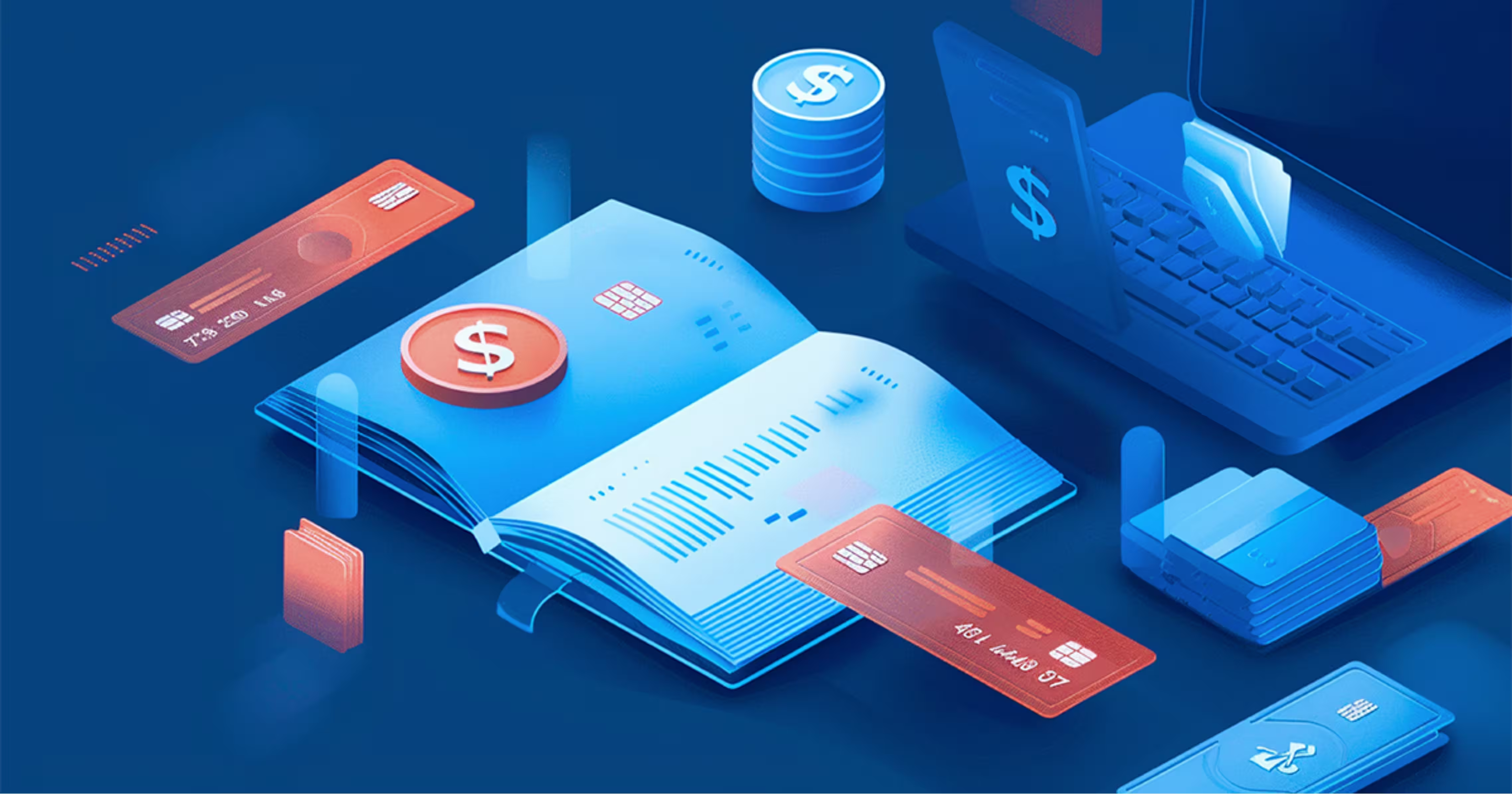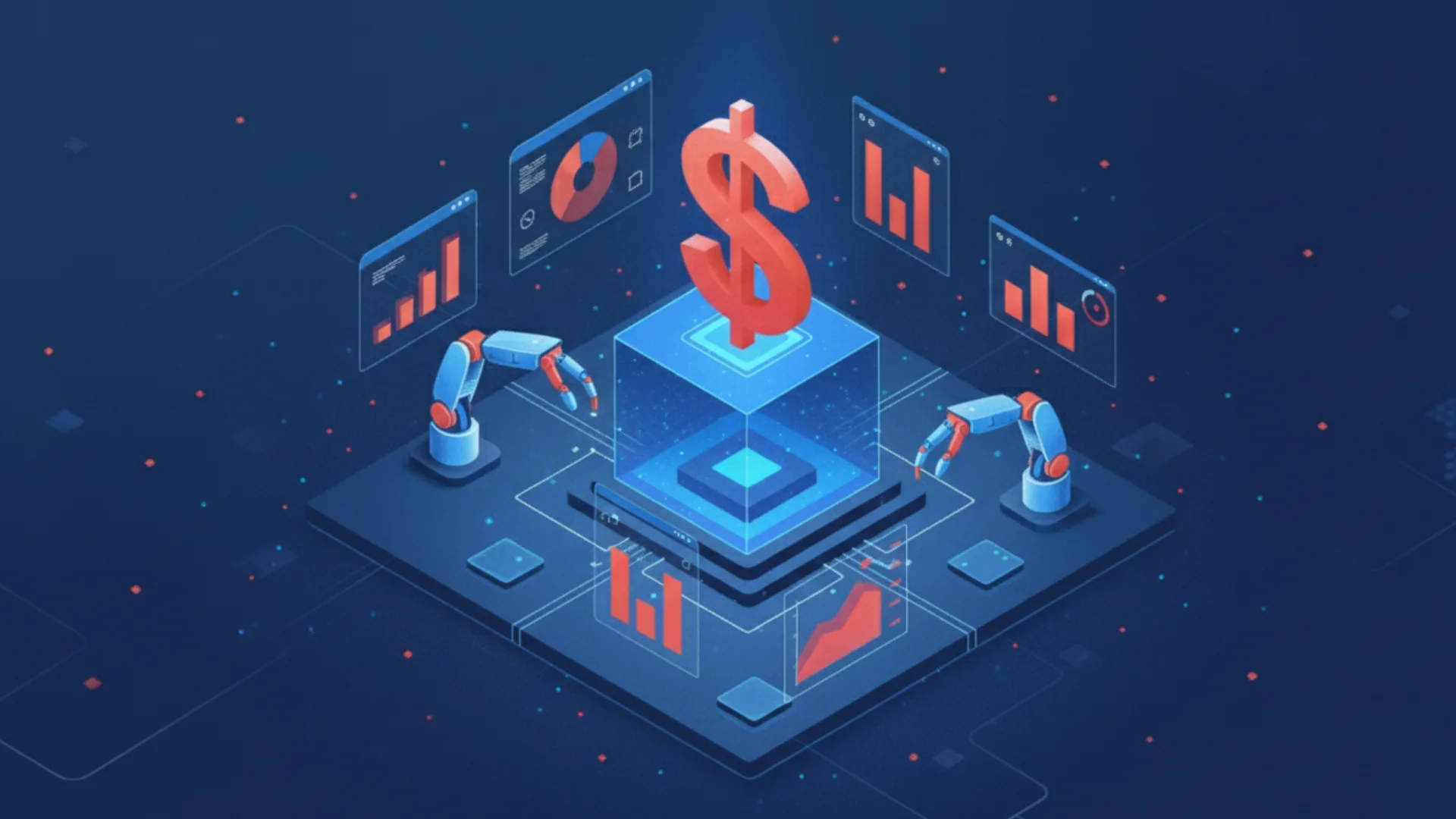A Comprehensive Guide to Metered Billing for SaaS Businesses

In the past, metered billing was typically adopted by large tech companies or SaaS businesses preparing for their IPOs.
Remember when Hubspot made waves back in 2014 when they announced their net revenue had jumped by 100% during their IPO debut — and all of it because they implemented usage-based pricing? Other public companies with some form of metered billing include Twilio, Amazon Web Services, and Snowflake.
However, it is a different story these days. With AI tools becoming widespread, even SaaS startups have started adding (or at least experimenting with) consumption-based components in their pricing strategy.
Writesonic, for example, charges you on the number of words you write — starting at $13 for 200,000 words. Another similar tool, copy.ai, on the other hand, calculates both words and workflows.
If you’re wondering how to set up metered billing for your SaaS company, we’ve got you covered. In this guide, we’ll unpack everything from how to decide if metered billing is right for you (it doesn’t always work) to the steps involved, and the potential pitfalls you might encounter.
Metered billing at a glance
- Metered billing is a pricing model where customers are charged only for the amount of a service they use.
- SaaS businesses can use metered billing to establish fair pricing standards and build trust — as customers only pay for what they use.
- Depending on your pricing strategy, you can choose per-unit, volume-based, and overage-based metered billing models.
- The success of your metered billing setup depends on how well you’re able to quantify your platform’s value with usage metrics. So it’s important to pick the right metrics to track.
What is metered billing?
Metered billing is a type of billing method where a customer is charged based on how much they consume a product or service. This billing approach can result in higher revenue, especially from heavy users who would otherwise have been capped by a flat fee.
While the utility — gas, water, electricity — and telecom industries have both always used metered billing to calculate fees, the last decade or so has seen other digital services like SaaS, BaaS, and PaaS also adopt a metered billing approach.
Some SaaS companies have even started including consultation services in their metered billing strategy — charging customers by the hour.

How to implement metered billing for your SaaS business
Here’s a quick guide to setting up your metered billing system —
- Choose the right usage metrics: Identify the metrics that best reflect your platform's value to customers.
- Track usage in real-time: Set up a tracking system to monitor usage data in real-time to ensure accurate billable metrics.
- Draft an overage policy: Establish a well-defined overage policy that outlines what happens when customers exceed usage thresholds.
- Set usage alerts: Monitor usage and trigger alerts for potential overages, so your customers aren’t shocked on invoice day.
- Provide self-serve options: Allow customers to track their usage data in real-time, pause access, and more so they have control over their usage.
Types of metered billing (with examples)
As we saw earlier, there are endless ways to incorporate metered billing into your pricing strategy. Here are some of the more common examples, to get you started —
Per-unit pricing
The simplest form of metered billing — here you pay a set price for each unit consumed. Let’s say, you’re using 10GB of storage space and each GB costs $10, then your bill would be $1000.

Some popular SaaS companies with per-unit pricing are Amazon Web Services and Twilio.
Volume-based pricing
Also called quantity-discount pricing, here the per-unit cost decreases as your overall consumption volume increases.
Folderly, an AI-powered email deliverability service, charges you $120 per mailbox, per month if your total mailbox count is less than 10. This reduces to $90 if you’ve got 10 to 24 mailboxes. More than 25 mailboxes? Then, it’s $70 — almost half the price you’d pay per mailbox if you had 9 mailboxes.

Tiered pricing with overages
A hybrid model — here you have some base plans with usage limits. And once you cross the usage limit, you’ll be charged an overage fee.
For example, Zoho Backstage (an event tech platform) allows you to host 200 attendees at an event in its basic plan. If you exceed that number, you’ll be charged an extra fee for each attendee. Essentially, per-unit pricing kicks in once you cross the usage threshold.

Multi-attribute pricing
Here, your subscription fee depends on multiple usage limits, rather than a single one. A simple example would be how Stripe charges you multiple commission percentages for each transaction — 2.2% for domestic payments, 4.4% for international payments, 0.5% for billing, and such.

The top 3 benefits of metered billing
Both big and small SaaS businesses have seen quite a bit of success with metered billing — mainly in their profit margins.
According to ScienceSoft’s fintech consultants, adopting new, technology-supported billing models can lift a mid-sized firm’s gross margin by 1–8%.
Here are some ways metered billing can help you build a profitable business:
More transparency, less ambiguity
Customers love pricing transparency — and displaying your plans on your website is only one half of the story. There are a lot of examples of deals falling apart at later stages due to complex pricing and hidden fees.

With metered billing, on the other hand, customers can see exactly what they're paying for, eliminating guesswork and hidden fees. Plus, with clear usage metrics (and a usage tracking dashboard) they can forecast their costs based on usage patterns — ensuring they don’t overshoot their budget.
Buyer-first selling
In 2021, Rob Roy Consulting surveyed 625 decision-makers in the US B2B tech space — and a whopping 73% of them said software vendors fell short when it came to honesty.
The 2022 G2 Buyer Behavior Report also highlights this sentiment: 35% of the respondents mentioned they find it difficult to get credible content from a vendor (with 7% further adding they don’t find the vendor’s website reliable).
That’s probably why most SaaS companies are trying to be more buyer-first in their sales approach. One way to do this is metered billing. By directly linking cost to usage, you can easily (and tangibly) prove value to would-be customers.
Plus, you can share their usage data with them in your invoices — continuing to build their trust in your brand even after you close the deal.
Pricing that’s ‘just right’ — for all customers
Ever heard of the Goldilocks Principle? It’s when you find that sweet spot between customer value and sustainable profit margins. Previously this was done using three pricing tiers — high, middle, and low — to attract businesses of all sizes.

And while that’s worked, metered billing can give customers even more control over their subscription fee — put simply, it’s pricing personalization at scale. Sweet, right?
Advantages over flat-rate pricing
Metered billing allows for more flexible pricing, aligning costs with usage, which can lead to cost savings for customers and increased revenue for businesses.
1. Better customer alignment
- Metered billing directly aligns costs with consumption, providing transparency and empowering customers to manage their usage effectively.
- Customers feel more in control and satisfied when they pay only for what they use, leading to improved customer satisfaction and loyalty.
- It can also encourage customers to optimize their usage and reduce waste, further aligning their interests with the business.
2. Greater scalability
- Metered billing allows businesses to easily adapt to changing customer needs and usage patterns, as they can scale their resources up or down as needed.
- This flexibility makes it easier to accommodate both light and heavy users within the same framework, offering a scalable solution for businesses.
- It also provides the ability to increase or decrease pricing based on supply and demand, allowing businesses to optimize their pricing strategy.
3. Easier upsell opportunities
- Metered billing allows businesses to identify and target customers who are likely to benefit from additional features or services.
- As customers' needs grow, they can easily upgrade their usage without navigating complex contracts, making upsell opportunities easier.
Setting up metered billing: Things to consider
Now for the most important question — what questions should you ask yourself when considering a metered billing component for your pricing strategy?
Can your USP be highlighted with quantifiable metrics?
While there are a lot of companies opting for metered billing, it’s not a magic bullet to fix your pricing strategy. Some SaaS products are either too simple to justify a metered billing component or too complicated to find a clear correlation between usage and value.
Take Kona, an AI leadership coach. Unlike other AI tools, it opted for a simple ‘per-user’ pricing model because its features aren’t built for usage tracking.
What does this mean for you — pick metered billing only if your usage metrics align with your core product offerings. If the USP isn’t easily quantifiable through usage metrics, then metered billing will not be effective.
A good example of a SaaS company that has implemented metered billing well is Flywheel, a growth platform for SaaS companies. While all six of their products have some form of metered billing, each component is well thought out — avoiding unnecessary complications.
For example — the Alerting and Personalization modules are simple tiered plans with fixed limits. However, their Session Replay module has volume-based pricing with per-unit charges ranging from $.005 to $0.0075 per replay.
Will your customers be okay with metered billing?
Another key factor to consider is how open your customers are to a metered billing approach. Juggling various pricing tiers with different usage limits can be overwhelming for B2C users who are typically known to prefer simpler, all-inclusive pricing options.
Even some B2B customer segments might find metered pricing unappealing during initial conversations. Here’s how Ivan Mazour, the CEO of Ometria puts it:
“During the very first meeting, they will ask how much it will cost. You’re then left in a slightly tough position because if you give a broad range e.g. our customers pay us between £1000 and £10000 per month, they won’t take you seriously. But if you give a narrower range you might get it wrong, or you might scare them off before you’ve been able to actually show them the value they’re going to get. We’re still working on getting this bit right and making sure that each salesperson does it in the same way.”
So, with metered billing, it’s especially important to sell your value proposition to customers — that way they know what they’re getting and how metered billing benefits them.
A good example is the open letter (or blog) that Zocdoc (a marketplace for healthcare professionals) posted when they moved to a metered pricing model in 2019.
Not only did they heavily A/B test the new pricing model, but they also shared their findings in the blog to prove how it helps lower the barrier to entry for customers. Here’s a snippet from their blog —

Our tip for metering billing implementation is to start with hybrid billing models, ensure usage tracking integration, and maintain transparent reporting for customers.
Will metered billing contribute to long-term profitability?
This is especially important if you have a freemium GTM model. While it's a great way to nudge free users towards a paid subscription, if most of your customers don’t hit the usage limit of your free plan, your profit margins might take a hit.
Take Twilio — it’s got over 10 million developer accounts. But most of its revenue comes from seven customers who each spend more than $10 million per year.

Do you have developer buy-in?
Setting up metered billing is not an easy feat. It requires a lot of cross-functional team collaboration — finance, sales, marketing, and engineering — with you developers doing a lot of the heavy lifting.
Implementing metering rules, usage tracking, data aggregation, and billing system integration are just the starting points. Ongoing maintenance will also eat into your engineering bandwidth.

While no-code/low-code metered billing platforms (like Zenskar) do go a long way in reducing engineering bandwidth, intricate pricing models will require developer assistance — leading to some companies bringing in a billing engineer as they scale.
Related reading: Why are popular billing tools a nightmare for metered billing
Top 3 metered billing traps and how to avoid them
Metered billing, though great, is not without its pitfalls. Here are some possible challenges that you might encounter (and what you can do):
1. Your MRR becomes unpredictable
Ironically enough, your customers’ biggest metered billing advantage is also your biggest drawback. As they pay for only the service they use — a fee that varies every month — predicting your monthly recurring revenue (MRR) can get tricky.
What can you do?
One idea is to start slow with hybrid pricing models that have a fixed recurring revenue component. You can also look at historical data to identify patterns and set a baseline when pivoting from traditional.
For example, e-commerce apps typically see an increase in adoption during the holiday season (October to December). Take Klaviyo — their customers sent over 11.6M SMSes per minute during the BFCM weekend alone.
2. You are at risk for ‘bill shocks’
A common concern with metered billing is a sudden (and usually unexpected) increase in usage. This is especially true with SaaS platforms that use metrics like total subscribers, automations, and such. One slight deviation in usage patterns — and the costs skyrocket.
Here’s a case of ‘AWS bill-shock’ where the subscription fee more than doubled in a single month, going from $600K to $1.3M —

What can you do?
Alert customers about spikes in usage beforehand. That way, they’re prepared for a higher fee at the end of the month. This can also help address anomalies like test users or process mishaps at the earliest to avoid unnecessary fee spikes.
3. Scaling-related complications can arise
With metered billing, scaling complications can pop up from both sides of the partnership:
- As your service evolves, you might introduce new features or functionalities that require usage tracking
- Similarly, as your customers grow, their usage values increase — leading to higher subscription fees
In both cases, it can be difficult for your customer to estimate the total cost and plan their budget accordingly.
What can you do?
A simple way to address this is by setting up a price estimate calculator — by playing around with different usage scenarios, customers can get a better sense of their potential fees.

Key metrics for monitoring metered billing
These metrics help assess the efficiency of the billing process and customer behavior.
- Usage Volume per Customer: This metric tracks the total amount of service consumed by each customer during a billing period. It's essential for understanding individual consumption patterns and ensuring accurate billing.
- Revenue per Usage Unit: This metric calculates the revenue generated for each unit of service consumed. It helps determine pricing effectiveness and identify potential areas for optimization.
- Cost vs. Usage Ratio: This ratio compares the cost of providing the service to the actual usage. It's a crucial metric for understanding profitability and making informed decisions about pricing and resource allocation.
- Billing Accuracy Rate: This metric measures the percentage of bills that are accurate. It's essential for maintaining customer trust and ensuring fairness.
Streamline metered billing with Zenskar
Unlike traditional solutions, Zenskar decouples metering from billing and contracts. This means you get access to real-time access to your customers’ usage data — leading to accurate billing, hassle-free pricing experiments, and granular contract and invoice customizations. All of this and more with minimum developer involvement.
That’s not all. Zenskar’s got you covered from day zero — get 24/7 support, request custom integrations, and more right from the moment you sign up for our sandbox.
Curious to learn more? Book a demo and we’ll show you how our automated billing solution can help you implement metered billing with barely any hassle.
Switch to zero-touch FinOps with Zenskar
Vertice closed books 70% faster with Zenskar
We launched our product 4 months faster by switching to Zenskar instead of building an in-house billing and RevRec system.

Frequently asked questions
SaaS companies have started implementing metered billing in their pricing strategies for a variety of reasons:
- To foster trust with customers as they only pay for what they use
- To create larger profit margins by focusing on high-value customers
- To reduce the barrier to entry by giving all customers a plan that’s right for them
Yes, metered billing and flat pricing can be combined. This means a customer could pay a fixed monthly fee (flat rate) and then be charged extra for usage exceeding a certain limit, or based on actual usage within a given period.
While metered billing and usage-based pricing are often used interchangeably, there's a subtle difference:
- Metered billing focuses on tracking specific metrics (e.g., storage used, API calls made) and charging based on those units.
- Usage-based pricing is broader, encompassing any pricing model where the cost is directly tied to how a customer interacts with the service
Put simply, metered billing is one component of the usage-based pricing model.
Metered and tiered billing are both pricing models based on usage, but they differ in how the price changes with consumption. Metered billing charges a customer based on their actual usage, often on a per-unit basis, with the price remaining consistent until usage changes. Tiered billing, on the other hand, divides usage into predefined tiers, each with a different price per unit.
Telecommunications, utilities, SaaS (Software as a Service), and cloud computing are some of the industries that benefit most from metered billing.














%20be%20truly%20invisible_.webp)











